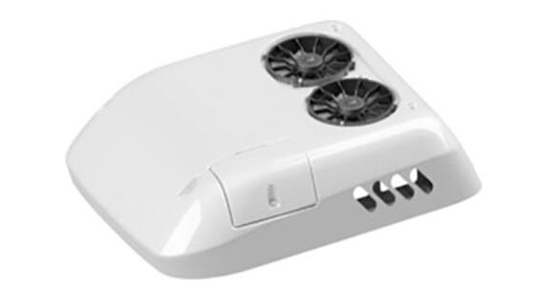Key Differences Between Rooftop and Integrated Bus Air Conditioning Units
Learn More

by
—
2024-07-31

SONGZ SONGZ SONGZ SONGZ
A well-functioning air conditioning system is essential for providing comfort to passengers on a bus, especially during hot weather. Understanding the key parts of a bus air conditioner and how it works can help in maintaining and troubleshooting the system. This guide provides a comprehensive overview of the components and operation of bus air conditioners.
A bus air conditioning system consists of several critical components that work together to cool the air. Here are the primary parts:
Compressor
The compressor is the heart of the air conditioning system. It pumps refrigerant through the system, compressing it into a high-pressure, high-temperature gas. The compressor is typically driven by the bus engine and is crucial for the refrigeration cycle.
Condenser
The condenser receives the high-pressure gas from the compressor. It dissipates the heat and condenses the gas into a high-pressure liquid. This component is usually located at the front or top of the bus, where it can efficiently release heat to the outside air.
Evaporator
The evaporator is where the actual cooling happens. It is located inside the bus, often under the seats or in the ceiling. The high-pressure liquid refrigerant is expanded into a low-pressure gas, absorbing heat from the air inside the bus and cooling it down.
Expansion Valve
The expansion valve controls the flow of refrigerant into the evaporator. It reduces the pressure of the refrigerant, allowing it to expand and cool. Proper functioning of the expansion valve is crucial for maintaining the desired temperature inside the bus.
Receiver-Drier
The receiver-drier removes moisture and contaminants from the refrigerant. It ensures that only clean, dry refrigerant enters the compressor, preventing damage and maintaining system efficiency.
Blower Fans
Blower fans circulate air over the evaporator coils and distribute the cooled air throughout the bus. These fans are essential for maintaining a consistent and comfortable temperature inside the vehicle.
Understanding how a bus air conditioner works involves following the refrigeration cycle and the interaction of its key components.
Refrigeration Cycle
The refrigeration cycle is a continuous process that involves the transformation of the refrigerant between its liquid and gas states. Here’s a step-by-step breakdown:
1. Compression: The compressor compresses the refrigerant gas into a high-pressure, high-temperature state and pumps it to the condenser.
2. Condensation: In the condenser, the high-pressure gas releases heat to the outside air and condenses into a high-pressure liquid.
3. Expansion: The high-pressure liquid passes through the expansion valve, where its pressure is reduced. This causes the liquid to expand and cool.
4. Evaporation: The cool, low-pressure refrigerant absorbs heat from the air inside the bus as it passes through the evaporator. This process cools the air, which is then circulated by the blower fans.
Air Distribution
The cooled air is distributed throughout the bus via ductwork and vents. Blower fans ensure a steady flow of air over the evaporator coils, maintaining a comfortable temperature. Adjustable vents allow passengers to direct the airflow as needed for personal comfort.
System Controls
Modern bus air conditioning systems are equipped with electronic controls that regulate temperature, fan speed, and other settings. These controls allow the driver to maintain optimal comfort levels inside the bus, regardless of external weather conditions.
A bus air conditioning system is a complex but essential component for passenger comfort. Understanding the key parts, such as the compressor, condenser, evaporator, expansion valve, receiver-drier, and blower fans, and how they work together, can help in maintaining and troubleshooting the system. If you need further assistance or are looking for a reliable supplier for bus air conditioning components, feel free to contact us. We are here to support your needs and ensure your bus air conditioning system runs smoothly.



R&D strength
About
Join us


Copyright ©2023 SONGZ, All Right Reserved.